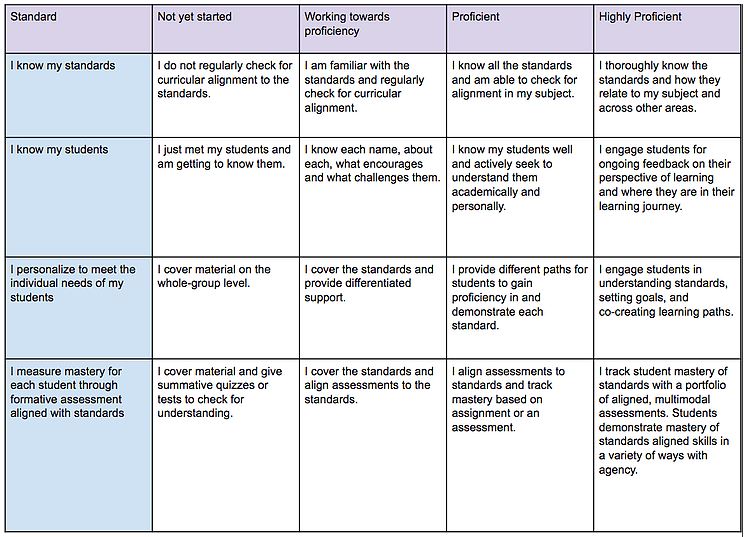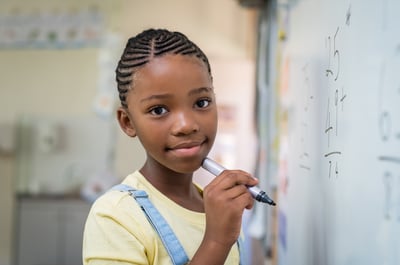Formative assessment is core to Personalized Learning. To master formative assessment as a pathway to personalizing the learning path, we need to make a critical mindset shift around assessment. Instead of thinking as assessment as the endpoint of the linear learning sequence, we need to think of assessment AS learning. By reimagining assessment as the spark of new learning, and specifically target self-assessment as that spark, we gain ground on helping students to become generative learners.
Traditional Sequence:
Present Objective & Access Prior Knowledge → Direct Instruction → Practice → Assessment
Assessment AS Learning:
Self Assessment & Goal Setting → Blended Learning & Reflection → Coaching/Teaching → Standards-Based Assessment (Student or Teacher created) → Reflection & Iteration
2) Alignment
 The focus on blended learning models creates a rigor risk if activities are not standards-aligned and measured. It’s quite possible to set up the perfectly timed and sequenced Station Rotation model with high student engagement while also missing the mark on personalization. Yes, blended learning is an efficient means to personalization but offline and digital activities must remain integritous to curricular standards. Further, it is critical for formative and summative assessments to demonstrate mastery of standards.
The focus on blended learning models creates a rigor risk if activities are not standards-aligned and measured. It’s quite possible to set up the perfectly timed and sequenced Station Rotation model with high student engagement while also missing the mark on personalization. Yes, blended learning is an efficient means to personalization but offline and digital activities must remain integritous to curricular standards. Further, it is critical for formative and summative assessments to demonstrate mastery of standards.
The use of rubrics and standards-aligned student learning logs can provide the essential skills backbone which allows for the flexibility of choice and agency in personalized learning. See our post on Lesson Planning for Personalization for a standards-based lesson template and challenge.
3) Agency
Student empowerment through agency is the ultimate goal in personalized learning. As students become more active drivers, they learn to communicate about their learning, set their own goals, and generate growth. Students can experience agency through conferencing, choice, creativity, and assessment. Self-assessment and reflection is also a way to help teachers efficiently manage a personalized learning environment. There is a time investment at the beginning which gets significantly easier as teachers develop systems of efficiency within their classes. At the heart of the personalized learning pitch is the power of technology, and this power can certainly be leveraged to help lighten the planning load as multiple paths open for students to learn different skills at different paces. However, the time needed to assess the data, align, and coach is an addition to the equation.
By creating a few simple systems for self-assessment (personalized learning log, data reflection & goals sheet, conference form, rubrics), teachers can empower students as agents and collaborate with them in planning for personalization.
Self-assess where you are using the LINC Personalized Learning Self-Assessment Rubric pictured below and setting goals to build your skills.

 Tailoring learning for each student’s strengths, needs and interests–including enabling student voice and choice in what, how, when and where they learn–to provide flexibility and supports to ensure mastery of the highest standards possible.
Tailoring learning for each student’s strengths, needs and interests–including enabling student voice and choice in what, how, when and where they learn–to provide flexibility and supports to ensure mastery of the highest standards possible.